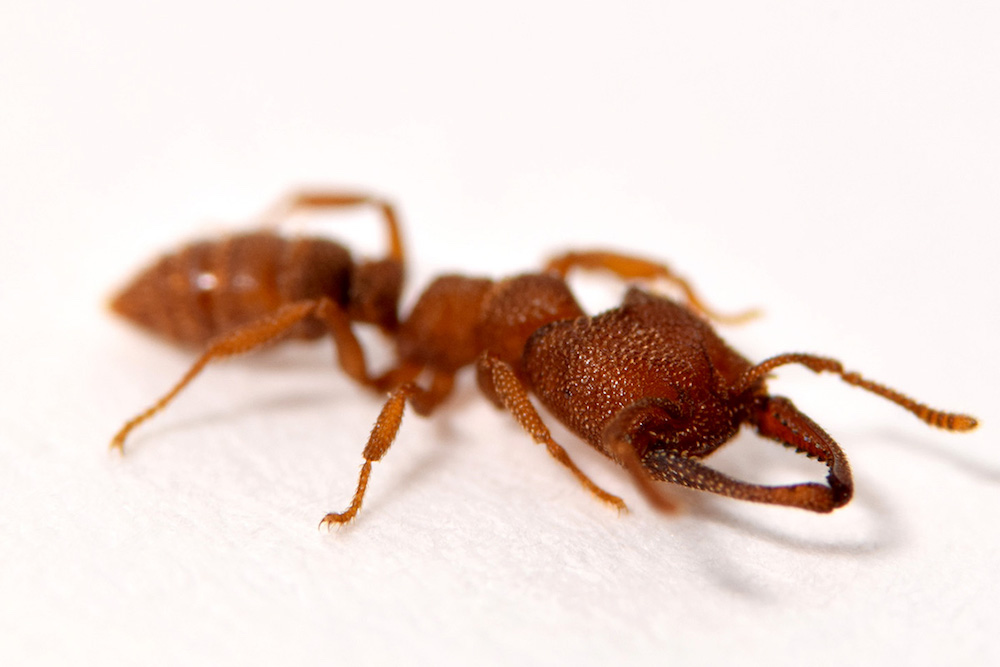Blood-Sucking 'Dracula Ant' Sets Animal Speed Record with 200-Mph Bite

There's a new high-speed record in the animal kingdom, and it belongs to a cannibal ant named for a vampire. Nature: Not scary at all.
According to new research published Dec. 11 in the journal Royal Society Open Science, the ant in question is able to snap its mandibles together in a bite that springs from zero to 200 mph (320 km/h) in about 0.000015 seconds — making that snap the single fastest animal movement ever observed. Known as Mystrium camillae, the quick-biting ant is an elusive and seldom-studied oddity living in Australia and the tropics of Southeast Asia. M. camillae belongs to a subfamily of ants known as "Dracula ants," so named because queens of this family tend to nourish themselves by sucking the blood of their own larvae (the larvae, thankfully, usually survive this friendly cannibalism).
But while the queen feeds, her subjects are out tunneling, foraging and, when duty calls, fighting. Researchers at the University of Illinois at Urbana-Champaign (UIUC) knew that M. camillae's bite was an important weapon in the ant's arsenal, but they didn't know how unfathomably fast that bite was until they filmed the ant in action using an ultra-high-speed camera. [Image Gallery: Creepy Ants of the World]
Looking at 480,000 frames per second, the researchers saw that the ant warms up for every bite by pressing its mandibles together over and over, effectively "loading" one mandible with tension. With enough energy amassed, the ant snaps one mandible over the other, causing the "loaded" half to spring forward with ruthless speed. In footage from the team's study, unfortunate insects caught in the path of M. camillae's bite go cartwheeling out of view as the ant's jaws come crushing together about 5,000 times faster than humans can blink.
According to study author Andrew Suarez, a biology and entomology professor at UIUC, 3D X-ray images of M. camillae's head revealed the ant's anatomical secrets.
"Even among ants that power-amplify their jaws, the Dracula ants are unique: Instead of using three different parts for the spring, latch and lever arm, all three are combined in the mandible," Suarez said in a statement.
This all-in-one spring power not only makes M. camillae one of nature's fastest-moving animals, but one of the most effective snappers, as well. Whether the Dracula ant employs this snapping prowess primarily for offense, defense or slam-poetry appreciation will require further study.
Sign up for the Live Science daily newsletter now
Get the world’s most fascinating discoveries delivered straight to your inbox.
- Creepy, Crawly & Incredible: Photos of Spiders
- Gallery of Crazy Ants
- Look Quick: Gallery of the Fastest Beasts on Land
Originally published on Live Science.

Brandon is the space/physics editor at Live Science. His writing has appeared in The Washington Post, Reader's Digest, CBS.com, the Richard Dawkins Foundation website and other outlets. He holds a bachelor's degree in creative writing from the University of Arizona, with minors in journalism and media arts. He enjoys writing most about space, geoscience and the mysteries of the universe.










